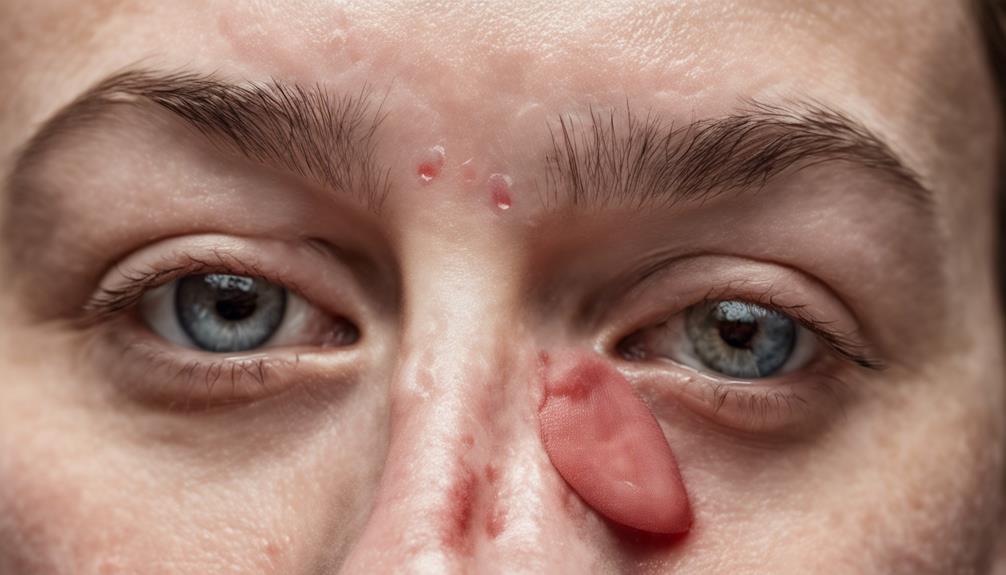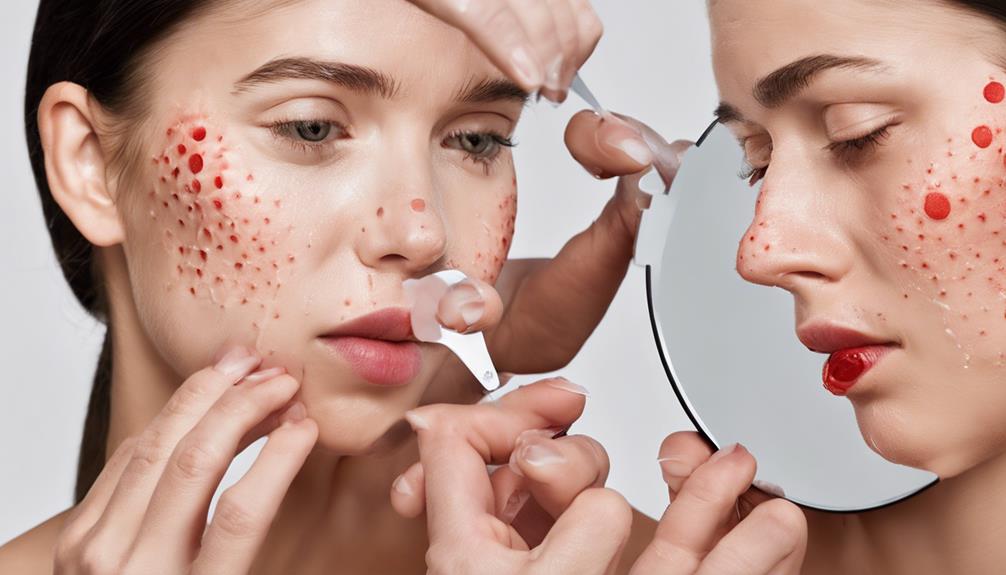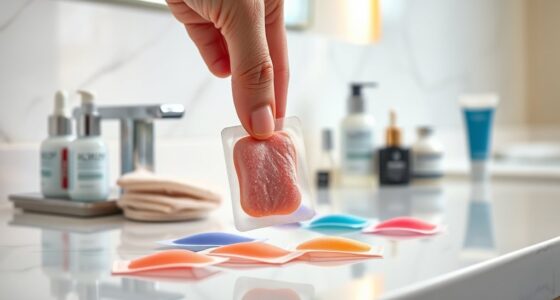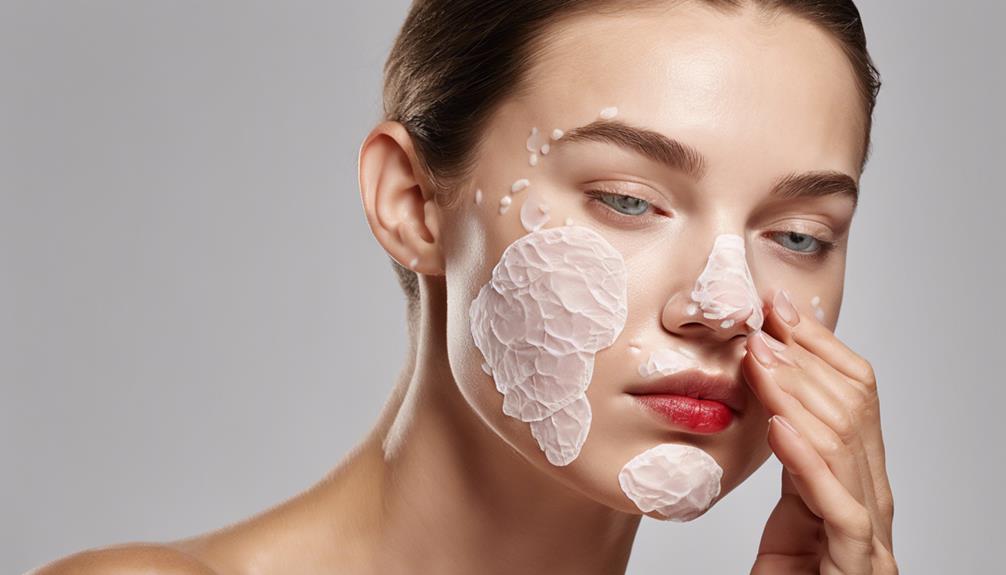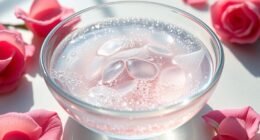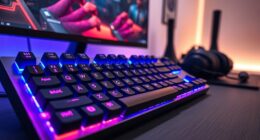For optimal results, it is recommended to keep a pimple patch on for 6-8 hours. Wearing it overnight allows for deeper skin penetration but avoid exceeding 12 hours to prevent irritation. Stubborn pimples may require up to 24 hours. Consider your skin type, the size of the pimple, and the strength of adhesion. Monitor for saturation or loss of stickiness, and change the patch promptly. Extended wear can benefit severe pimples by reducing inflammation. Changing patches promptly supports the healing process. Consistent use reduces the appearance of pimples, helps draw out impurities, and speeds up healing. Hydrocolloid patches are effective; be sure to follow the recommended times and moisturize after removal. Avoid picking at pimples. Making subtle improvements will help with the effectiveness of the treatment.
Key Takeaways
- Wear pimple patches for 6-8 hours for best results.
- Overnight wear allows deep penetration of active ingredients.
- Extended wear over 12 hours can lead to skin irritation.
- Longer wear up to 24 hours for stubborn pimples may be necessary.
- Adjust wear time based on individual circumstances for effective treatment.
Recommended Duration for Pimple Patch Wear
When using pimple patches, it's important to adhere to the recommended wear duration of at least 6-8 hours. These little patches work wonders when left on overnight, allowing the active ingredients to penetrate deep into the skin and work their magic. It's like having a vital skincare ally working tirelessly while you catch some z's.
However, it's essential not to go overboard – wearing a patch for more than 12 hours can lead to skin irritation. For those stubborn pimples that just won't quit, a longer wear time of up to 24 hours might be necessary.
Factors Influencing Patch Wear Time

When determining how long to keep a pimple patch on, factors such as skin type impact, pimple size consideration, and patch adhesive strength come into play. These elements influence the wear time of the patch and can vary based on individual circumstances.
Understanding these factors is essential for effectively managing and treating pimples with the use of patches.
Skin Type Impact
Skin type greatly influences the best duration for wearing a pimple patch, impacting its effectiveness. Oily skin types can benefit from longer wear times, ensuring better absorption of the patch's ingredients. On the other hand, individuals with dry or sensitive skin should be cautious and limit patch wear time to prevent skin irritation.
For those with combination skin types, adjusting the patch wear time based on the specific area of application might be necessary. While patches are generally recommended to be worn for at least 6-8 hours, severe pimples may benefit from being left on for up to 24 hours.
Adhering to the recommended wear time based on your skin type can optimize the effectiveness of pimple patches, aiding in faster healing and blemish reduction.
Pimple Size Consideration
Considering the size of a pimple plays an important role in determining how long a pimple patch should be worn for maximum effectiveness. Small pimples may only require a shorter wear time of 6-8 hours, while larger pimples might need a longer duration for the patch to effectively extract impurities.
For deeper or stubborn pimples, wearing the patch overnight can enhance its efficiency. The wear time of a pimple patch is influenced by the size and severity of the pimple, making it essential to tailor the duration based on individual needs.
Following the specific instructions provided by the patch manufacturer is crucial for best results, ensuring that the patch is used effectively to address varying pimple sizes.
Patch Adhesive Strength
The adhesive strength of a pimple patch greatly influences its duration of wear on the skin. Factors like skin type play an important role in determining how long a patch can stay in place. Those with oilier skin might need patches with stronger adhesive properties for better adherence.
Additionally, patch material and the size of the pimple can affect wear time. Sweat and moisture on the skin can also impact how well the patch sticks. To make the most of your pimple patches, it's vital to take into account these factors and follow the manufacturer's instructions carefully.
Importance of Monitoring Patch Condition
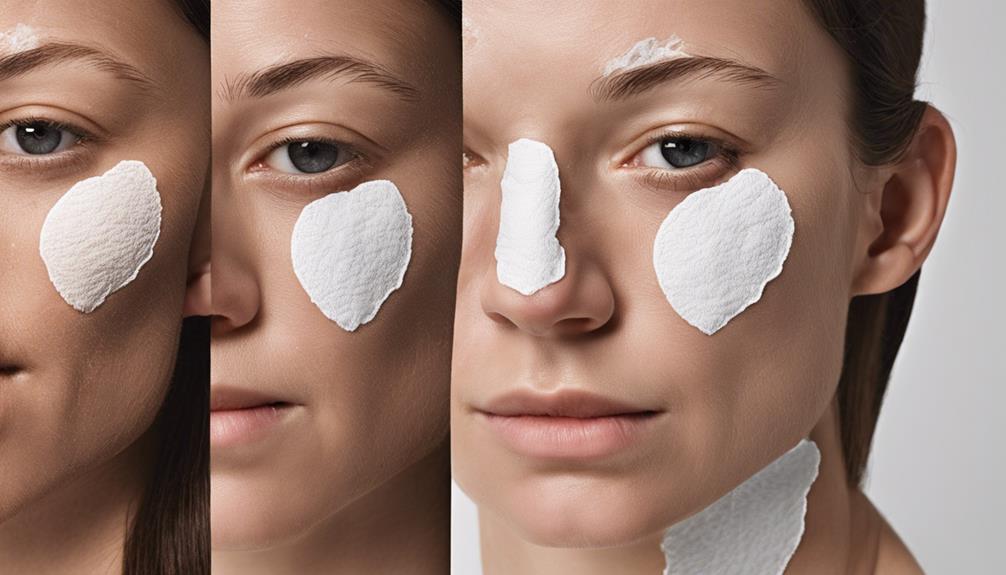
Regularly checking the patch for saturation or loss of adhesion is important to prevent skin irritation and guarantee effective pimple treatment. Hydrocolloid patches work best when they're changed promptly if they become saturated with pus or impurities. By monitoring the patch condition, you make sure that it continues to draw out impurities and helps the pimple heal faster. Neglecting a saturated patch can't only lead to skin irritation but also worsen the pimple.
It's vital to follow the manufacturer's instructions on how long to keep the patch on and when to replace it. Adhering to these guidelines maximizes the patch's effectiveness in treating the pimple. Remember, the goal is to support your skin in healing, so keep a close eye on the patch's condition. Trust the process, and your skin will thank you for the care and attention you provide.
Maximum Wear Time for Severe Pimples
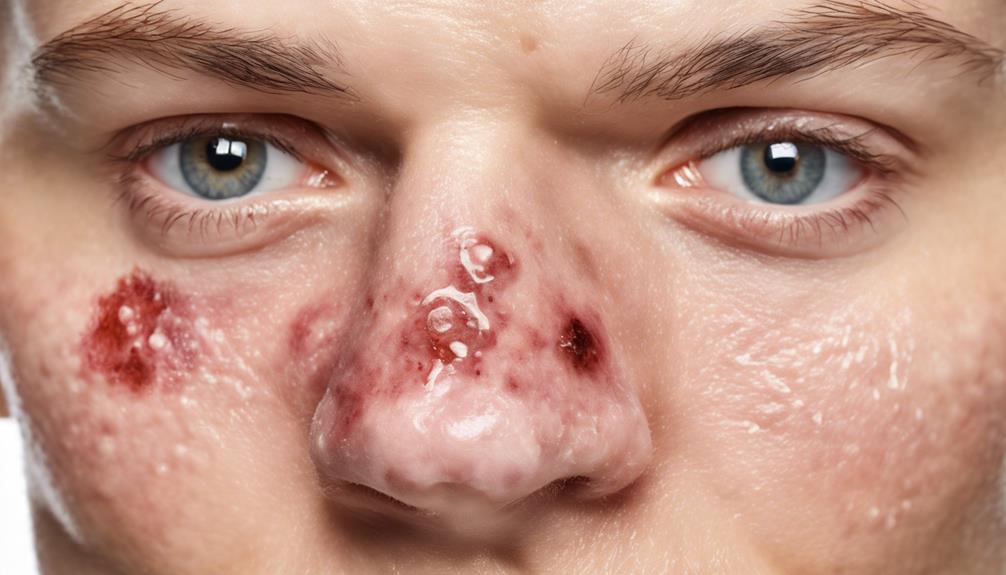
After monitoring the patch condition to guarantee effective treatment, determining the maximum wear time for severe pimples becomes vital. When dealing with severe pimples, it's recommended to leave hydrocolloid patches on for up to 24 hours. This extended wear time allows the patch to continuously absorb impurities and promote faster healing.
It's important to keep a close eye on the patch throughout the day, ensuring it remains in place and doesn't become overly saturated. By wearing the patch overnight, you provide your skin with an extended period of treatment, maximizing the benefits of the hydrocolloid technology. This prolonged exposure to the patch's healing properties can help reduce inflammation and redness associated with severe pimples.
Remember to follow the instructions provided with the patches to prevent any potential skin irritation. By adhering to these guidelines and allowing the patch to work its magic overnight, you can effectively combat severe pimples and promote clearer, healthier skin.
Benefits of Overnight Patch Application
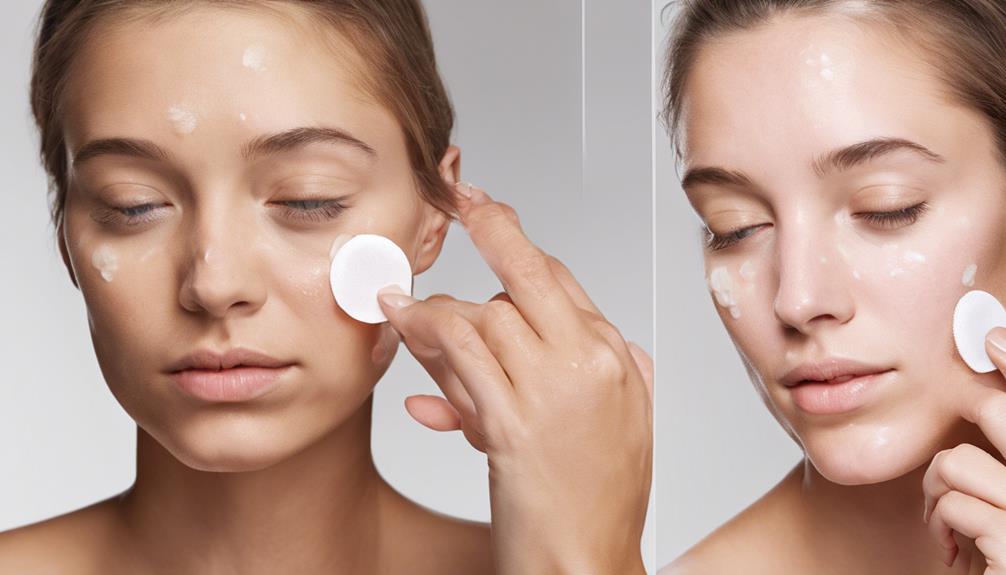
Overnight patch application accelerates the healing process, prevents further infection, and reduces inflammation overnight. This method allows for a quick and discreet way to treat pimples without interruption during sleep.
Prolonged wear time enhances the effectiveness of the patch in treating the pimple.
Quick Healing Process
Using pimple patches overnight can greatly accelerate the healing process by creating an ideal environment for skin recovery. The best pimple patches are designed to be left on overnight to maximize their effectiveness in absorbing impurities like pus and oil.
By applying a pimple patch before bed, you allow it to work its magic while you sleep, reducing inflammation, redness, and the appearance of pimples by morning. Leaving pimple patches on overnight also prevents the temptation to touch or pick at the affected area, promoting faster healing.
This extended wear time guarantees that the patch can extract impurities effectively and support the skin's natural recovery process.
Prevents Further Infection
To enhance skin protection and aid in preventing further infection, pimple patches create a barrier when left on overnight. The pimple patch acts as a shield, preventing external bacteria and germs from aggravating the pimple.
By keeping the patch on overnight, it effectively absorbs impurities like pus and oil that could lead to additional breakouts. This extended application time not only promotes faster healing but also reduces the risk of introducing new bacteria to the affected area.
The overnight use of a pimple patch is a proactive approach to maintaining skin health, as it minimizes the chances of reinfection and allows the pimple to heal undisturbed. So, consider leaving the patch on overnight for added protection against further infection.
Reduces Inflammation Overnight
Applying a pimple patch overnight can greatly reduce inflammation and redness in pimples. The ideal wear time allows the patch to work its magic, drawing out impurities and calming the skin.
By keeping the pimple patch on while you sleep, you create an environment that promotes healing and minimizes irritation. This overnight application acts as a protective barrier, shielding the pimple from external aggressors and preventing further infection.
The uninterrupted exposure to the patch overnight enhances its effectiveness in reducing inflammation, making it an excellent way to fast-track the healing process. For best results in combating pimples, leaving the pimple patch on overnight is a simple yet powerful strategy for clearer, healthier skin.
Changing Saturated or Loose Patches
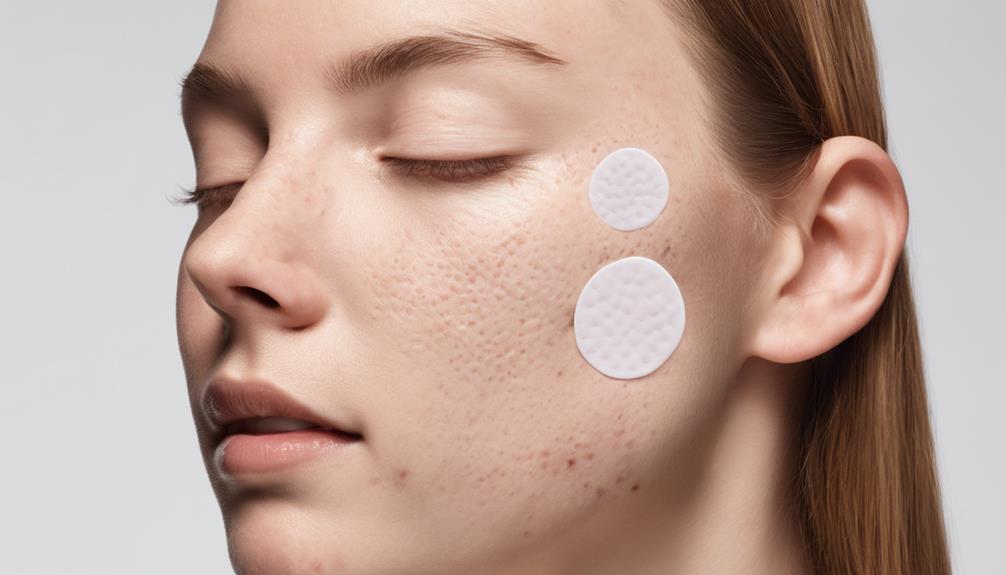
When a pimple patch becomes saturated with fluid or loses adhesion, it's important to change it promptly to maintain its effectiveness in absorbing impurities and promoting healing. Saturated patches may not be able to absorb impurities effectively, and loose patches mightn't stay in place to provide the necessary barrier for healing.
Regularly checking and changing pimple patches helps guarantee best results and prevent skin irritation. Following the instructions regarding the duration of use and replacement intervals is vital for maintaining the effectiveness of the patches and promoting skin health.
Promoting Healing and Reducing Irritation

Promote healing and reduce irritation by allowing pimple patches to remain on the affected area for at least 6-8 hours to effectively absorb impurities. These hydrocolloid dressings work by drawing out excess sebum and pus, helping to flatten and heal the pimple. For mild to moderate pimples, wearing the patch overnight can greatly improve the healing process. In more severe cases, leaving the patch on for up to 24 hours may be beneficial, but it's essential to monitor for any signs of skin irritation. Regularly checking the patch for saturation and ensuring proper adhesion is key to maximizing its effectiveness.
After removing the pimple patch, gently cleanse the area to remove any residue. Applying a non-comedogenic moisturizer can help keep the skin hydrated and promote further healing. Remember to resist the temptation to pick or pop the pimple, as this can lead to scarring and prolong the recovery process. By following these steps, you can aid in the healing process and minimize skin irritation for a clearer complexion.
Effective Pimple Appearance Reduction

Using pimple patches consistently can effectively reduce the appearance of pimples within a short period of time. These patches, often made of hydrocolloid, work by drawing out impurities from the pimple. When worn overnight, they can notably reduce the size of a pimple by morning.
In cases of more severe pimples, leaving the patch on for up to 24 hours can maximize its effectiveness. Consistent use of pimple patches not only helps in reducing the appearance of pimples but also speeds up the healing process and decreases redness. By following the recommended wear times, the hydrocolloid material in the patch can effectively absorb impurities, promoting faster healing.
Whether you have a sudden pimple or want to address ongoing acne, utilizing pimple patches can be a convenient and effective solution for visibly reducing pimple appearance and promoting healing.
Frequently Asked Questions
Can You Leave a Pimple Patch on Too Long?
Yes, you can leave a pimple patch on for too long. Doing so may lead to skin irritation and damage. Overhydration of the skin, reduced effectiveness in impurity absorption, and hindrance to the natural healing process are potential issues.
It's important to follow the patch-specific instructions for best results. Stick to the recommended duration to avoid discomfort and support the healing process effectively.
Do Pimple Patches Work on Unpopped Pimples?
Pimple patches can effectively target unpopped pimples by absorbing excess oil and pus, reducing inflammation and redness. They form a protective barrier, promoting faster healing.
For best results, patches should be worn for at least 6-8 hours. The hydrocolloid material in pimple patches helps draw out impurities from the skin.
These patches work wonders on unpopped pimples, making them a valuable addition to any skincare routine.
Why Do Pimple Patches Turn White?
When pimple patches turn white, it's a good sign that they're pulling out gunk from your skin. The white color indicates the absorption of pus and impurities, helping to reduce inflammation and speed up healing.
It's like a visual confirmation that the patch is hard at work on your blemish. So, seeing that white spot means the patch is doing its job effectively in treating and healing your pimple.
When Should I Remove Pimple Patch?
When it comes to pimple patches, timing is key. Removing them after 6-8 hours is ideal to prevent skin irritation and avoid over-drying. Trust us, leaving them on for more than 10 hours won't do your skin any favors.
Following these guidelines guarantees the best results and keeps your skin happy. Remember to apply the patch on clean, dry skin and remove it with clean hands for the best outcome.
Does the Timing of Using Pimple Patches Affect How Long You Should Keep Them On?
When it comes to your pimple patch skincare routine, timing is everything. The recommended duration for keeping pimple patches on can vary based on the specific product. Some patches are designed to be worn overnight, while others can be left on for up to 24 hours. Always follow the instructions for best results.
Conclusion
In summary, it's recommended to keep a pimple patch on for at least 6-8 hours, with the option of wearing it overnight for maximum benefits. Monitoring the patch condition and changing it when necessary is essential for promoting healing and reducing irritation.
Studies have shown that using pimple patches can reduce pimple size by up to 50% overnight. Remember to follow these guidelines to effectively treat your pimples and achieve clearer skin.
Emma founded Patchology.org with a vision to simplify skincare through the innovative use of patches. With over a decade of experience in skincare blogging, Emma ensures that every piece of content on the site meets the highest standards of clarity and integrity. She loves curating content that makes skincare accessible to everyone.
